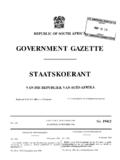Transcription of Competition Enforcement in the Pharmaceutical Sector (2009 ...
1 CompetitionCompetition Enforcement in thePharmaceutical Sector (2009-2017)CompetitionReport from the commission to the Council and the European ParliamentEuropean Competition authorities working together for affordable and innovative medicines European CommissionReport from the commission to the Council and the European ParliamentCompetition Enforcement in the Pharmaceutical SectorEuropean Competition authorities working together for affordable and innovative medicinesIllustration Publications Office of the European Union, 2019 PDF: ISBN 978-92-79-98278-1 KD-07-18-081-EN-N European Union, 2019 Reproduction of the text is authorised provided the source is of the artistic material contained therein is us: Executive Summary Following the European commission s inquiry into the Pharmaceutical Sector in 2009, Competition law en-forcement and market monitoring in this area have been a high priority across the EU.
2 This report provides an overview of how the commission and the national Competition authorities of the 28 Member States ( Eu-ropean Competition authorities ) have enforced EU an-titrust and merger rules in the Pharmaceutical Sector in 2009-2017. It responds to concerns expressed by the Council and the European Parliament that anti-com-petitive practices of Pharmaceutical companies may endanger patients access to affordable and innovative essential Competition authorities work closely together to safeguard effective Competition on Pharmaceutical markets. Since 2009, the authorities have together adopted 29 antitrust decisions against Pharmaceutical companies. These decisions have imposed sanctions (with fines totalling over EUR 1 billion) or made binding commitments to remedy anti-competitive behaviour. More importantly, some of these decisions addressed anti-competitive practices that had previously not been addressed under EU Competition law.
3 These precedents give broader guidance to industry players on how to ensure that they comply with the law. In 2009-2017, European Competition authorities inves-tigated more than 100 other cases, while over 20 cases of possible antitrust infringements are currently being examined. To ensure that Pharmaceutical markets do not get too concentrated due to mergers, the Commis-sion reviewed more than 80 transactions. Competi-tion concerns were detected in 19 merger cases, and the commission cleared these mergers only after the companies offered to address concerns and modify the Pharmaceutical Sector requires close Competition law scrutiny and the reported antitrust and merger cases provide a range of examples of how enforcing Competition law specifically helps to safeguard EU pa-tients access to affordable and innovative to cheaper medicinesHigh prices of medicines impose a high burden on the national healthcare systems, where pharmaceuticals already account for a significant share of spending.
4 Effective Competition from generics and, more re-cently, biosimilars typically represents a vital source of price Competition on Pharmaceutical markets and sig-nificantly drives down prices (for generics, by 50 % on average). This not only makes older treatments much more accessible, but also allows some of the related savings to be redirected to newer, innovative medicines. To mitigate the impact of generic entry, which greatly reduces revenues from commercially successful medi-cines, originator companies often implement strategies to extend the commercial life of their older medicines. Some of these strategies and other practices that can impact price Competition have attracted Competition law Competition authorities have vigorously in-vestigated and sanctioned practices that lead to higher prices. In a series of decisions that build on the Com-mission s 2009 Sector inquiry, the authorities have tar-geted conduct that curbs the market entry or expan-sion of generics.
5 Landmark decisions were taken by both the commission (Lundbeck, Fentanyl and Servier cases) and the United Kingdom authority (Paroxetine case) against pay-for-delay deals. In such deals, the in-cumbent originator company pays the generic company to give up, or delay, its plans to enter the market. This way, the generic company gets a part of [the originator s] cake resulting from the artificially high prices (as one company under investigation explained in an internal document found by the commission ). Competition Enforcement IN THE Pharmaceutical SECTOR4 The French Competition authority has pioneered several decisions that prohibit incumbents disparagement practices to curb the uptake of newly launched generic products. Other authorities have sanctioned incum-bents that were abusing regulatory procedures to keep generics out of the market. There have, moreover, been several recent investiga-tions into the pricing of certain off-patent medicines (in one example, the price rose up to 2,000 %), and several authorities have found such pricing practices to be unfair and abusive, namely in Italy (the Aspen case), the United Kingdom (the Pfizer/Flynn case) and Denmark (the CD Pharma case).
6 In addition, Competition authori-ties have prosecuted more classical forms of miscon-duct, such as bid rigging cartels, or strategies to cut off rivals from access to key inputs or to prices may also result from mergers of phar-maceutical companies where the pricing power of the merged company is strengthened. The commission has intervened in a number of mergers that could have led to price increases, in particular for generic products ( the Teva/Allergan case) or biosimilar products ( the Pfizer/Hospira case). The commission cleared these transactions only after the companies had committed to divest parts of their businesses to suitable buyers in order to preserve the existing degree of price to innovative medicines Innovation is crucial in the Pharmaceutical Sector , with Pharmaceutical companies among the leaders in in-vesting in R&D. However, market participants may sometimes engage in conduct that affects the incen-tives to innovate (patenting, interventions before au-thorities, acquisitions of competing technologies, etc.)
7 In doing so, they may breach Competition merger control, the commission has prevented trans-actions that could compromise R&D efforts to launch new medicines or to extend the therapeutic use of ex-isting medicines. The commission intervened to protect innovation Competition in a number of cases which, for example, threatened to thwart advanced R&D projects for life-saving cancer drugs (Novartis/GlaxoSmithKline Oncology) or for pipeline insomnia medicines at an early stage of development (Johnson & Johnson/Actelion). In the Pfizer/Hospira case, the commission was concerned that the merger would do away with one of the two parallel projects to develop competing biosimilars. The commission cleared all these transactions but only after the companies offered remedies to ensure that pipeline projects were not dropped and found a new operator to drive them rules acknowledge that companies may work together to foster innovation.
8 However, companies sometimes seek to frustrate rival innovation efforts or to relax competitive pressures that force them to invest in innovation. For example, action against attempts to unduly delay generic entry helps to effectively enforce the end of the innovator s market exclusivity and there-fore induce further innovation by originator companies. In addition to safeguarding innovation, antitrust en-forcement also fosters patients choice by intervening against various exclusionary practices such as a rebate scheme designed to exclude competitors from hospital tenders or the spreading of misleading information about the safety of a medicine when used to treat con-ditions not mentioned in the marketing authorization (off-label use).Scope for further Enforcement actionThe examples of cases in this report show that com-petition law Enforcement can be very effective, within its mandate and remit, namely to investigate anti-competitive agreements, abuses by dominant firms, and mergers.
9 However, there are limits to what com-petition law can do and continuous efforts by all stake-holders are needed to meet the societal challenge of ensuring sustainable access to affordable and innova-tive past Enforcement record provides a solid basis for Competition authorities to continue and to focus their Enforcement efforts. Effective Enforcement of EU com-petition rules in the Pharmaceutical Sector remains a matter of high priority and the Competition authorities will continue to monitor and be pro-active in investi-gating potential anti-competitive 51. Introduction 62. Overview of Competition Enforcement in the Pharmaceutical Sector Enforcement of antitrust rules Merger review in the Pharmaceutical Sector Market monitoring and advocacy regarding pharmaceuticals and healthcare 113 Competition Enforcement is shaped by the particularities of the Pharmaceutical Sector Specific structure of demand and supply in Pharmaceutical markets The legislative and regulatory framework shapes competitive dynamics 154.
10 Competition promotes access to affordable medicines Antitrust Enforcement supports swift market entry of cheaper generic medicines Enforcement against dominant firms charging unfairly high prices (excessive prices) Other anti-competitive practices capable of inflating prices Merger control and affordable medicines 265. Competition drives innovation and increases the choice of medicines Antitrust Enforcement fosters innovation and choice Merger control preserves Competition on innovation for medicines 296. Conclusion 32 Competition Enforcement IN THE Pharmaceutical SECTOR6 INTRODUCTION1. IntroductionThe Council asked the commission to prepare a report on recent Competition cases following the pharma Sector inquiry of 2008/2009 1. It expressed concerns that pa-tients access to affordable and innovative essential medicines may be endangered by a combination of (i) very high and unsustainable price levels; (ii) market withdrawals, or other business strategies by pharma-ceutical companies; and (iii) the limited bargaining power of national governments against those Pharmaceutical companies.

















